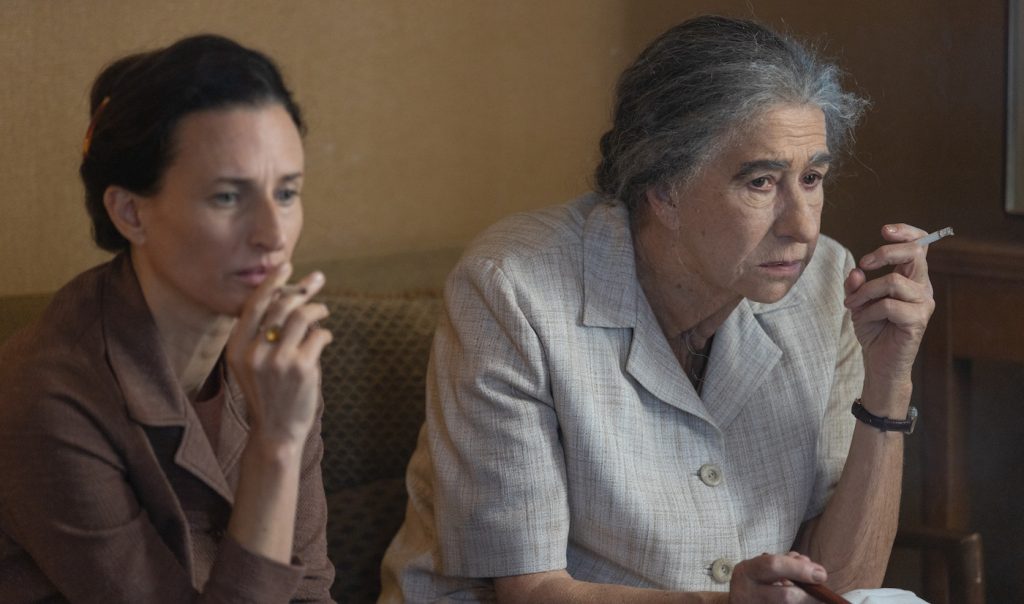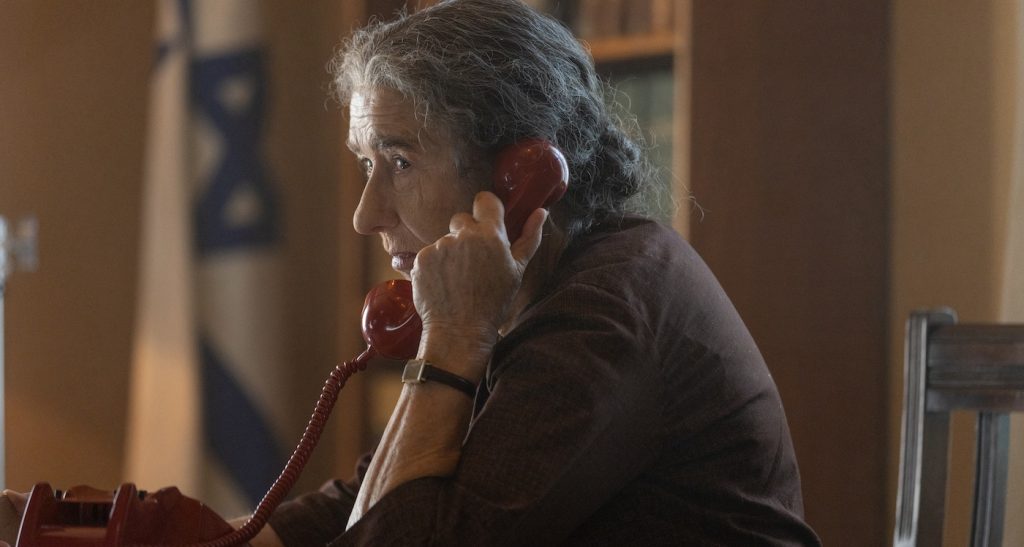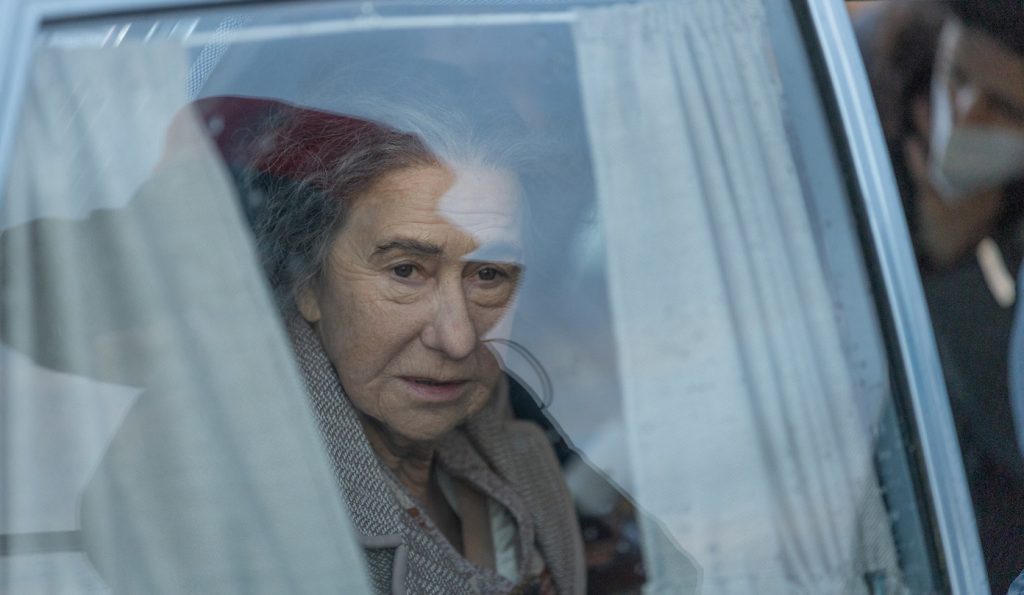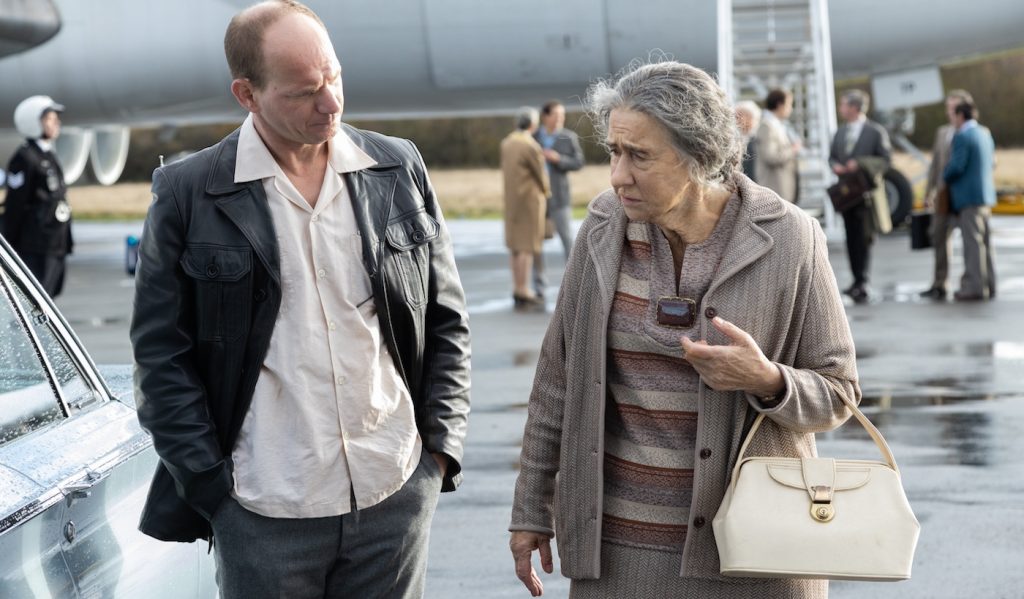The Oscar-Nominated Hair & Makeup Team on Turning Helen Mirren Into “Golda”
In 2023, Oscar-winning director Guy Nattiv helmed Golda, a biographical drama about Israeli Prime Minister Golda Meir set during the 19 days of the Yom Kippur War in 1973. As usual, Dame Helen Mirren is masterful in the title role. One key to the believability of her portrayal was visually melding Mirren and Meir together through costume, makeup, and hair.
The Academy has recognized all the attention to detail and artistry used to achieve Golda’s finished look with an Oscar nomination for best achievement in makeup and hair styling. That honor goes to hair and makeup supervisor Karen Hartley Thomas, prosthetics designer and founder of Red Girl makeup effects studio Suzi Battersby, and prosthetic makeup artist Ashra Kelly-Blue.
The Credits spoke to the newly minted Oscar nominees about how they collaborated with Nattiv and Mirren to bring such an important historical figure to life.
Karen, can you start by talking about the most important aspects of research that aided you in building Helen’s look in terms of photographs and reference materials?
Karen: When I got the job, I immediately went fully into it. We had amazing research available to us from production. I worked very closely with Sinéad Kidao, the film’s costume designer, and we also were incredibly lucky to have access to Golda’s grandson, Gideon Meir, and he gave us very insightful information about Golda, like the fact that she had a manicure every week with clear nail varnish, but she was a heavy smoker, and so had nicotine fingers. He talked about the texture of her hair and that she would wash it and leave it to dry into a massive corkscrew curl. We were incredibly lucky to have all that information, and Guy had lots and lots of pictures to show us, so there was a wealth of information right from the beginning.

How did you proceed?
Karen: We didn’t have a massive amount of time, and I had worked with Helen before, so I spoke to her and Sinéad on Zoom. Helen wasn’t so keen on having prosthetics. She thought maybe we should have just a wig or a combination of wig and eyebrows. I said to Helen, “Let’s just get everything.” So we had contact lenses, prosthetics, a wig, eyebrows, teeth, although we didn’t use the teeth, and we got together and tried it all. We really always wanted to show the essence of Golda rather than put Golda’s face onto Helen. You’ve got two massively iconic women there, so there’s a balance to be achieved. Suzi started on the prosthetics, we started on the wig, everything was made, and then it came together a week before shooting, and we did a test. It was really a matter of putting it all on, seeing what worked, and taking off what we didn’t like.

With so little wiggle room, time-wise, it was a good thing it worked!
Karen: Yes! We didn’t have the luxury of two or three tests to make many changes, although we did change the wig a little bit, and Suzi adapted the prosthetic sculpt. It was really putting it together, having a look, and seeing what Helen thought, and she loved it. We all wanted to achieve the same thing, obviously. Everyone, including Suzi and Alex Rouse, Helen’s wig maker, complemented each other in terms of collaboration, and I think the timescale probably helped us because you make decisions quickly. When you do have to focus on it so sharply, the best work comes out of it.
Suzi, in terms of the prosthetics, what were some of the keys to Golda’s look, and what were some of the technical elements used to create them?
Suzi: Our job is problem-solving. Ultimately, across all filmmaking, you’re given a brief; the job is to figure out how to make it happen. It was partly about designing a prosthetic look that we knew our actor would go for because Helen hasn’t had extensive experience with prosthetic makeup like that before, so we had to do something that wouldn’t overwhelm her face, create that essence, and bring these two women together. Helen was cast initially because Golda’s family saw her in Helen, just as she is. That inner energy that Helen Mirren has, we didn’t want to cover all that up with prosthetics. It was definitely about finding a balance in designing and sculpting it.

How was that achieved?
Suzi: We deliberately made pieces that didn’t cover her whole face. We had six pieces. We had two eye bags, a nose piece, two jowls, and the front half of the neck. By doing that, it meant that we had enough of Helen’s actual face on show, which is really important for the sake of expression, and to make sure we don’t lose our actor. It meant a huge challenge for me, Ashra, and the rest of my team, in terms of how we made the pieces, because we had to create pieces that were going to be very exposed. We had a lot of exposed edges, so our plastic had to be incredibly thin. We also had pieces that were exceptionally soft.
How are pieces that soft created?
Suzi: There’s a product called deadener that you can add to silicone, and we were really pushing the limits of the deadener that we were using to 300%, which is very, very high, but it did mean that it moved beautifully. You want mature skin to move like that, especially necks. You want to have that beautiful movement that makes you think of your grandma. To get that look, I wanted to push our workshop team to try and see what we could achieve, and they managed it brilliantly at that level.
Ashra, can you talk a bit about some problem-solving to get to that look?
Ashra: With the pieces being run at 300%, with LV (low viscosity), it just meant the pieces were going to be so much more malleable than normal, which is why, on camera, it looks just like real skin. In the workshop, touching it felt like old skin, which is why it moves so well. When it came to application, working on mature skin such as Helen’s, we just had to be really careful and super delicate because the plastic was so thin and soft. We just had to take our time, making sure we didn’t tug or pull any bit of her otherwise that would read on camera. We were meticulous when putting the neck on, going as softly as we possibly could with our fingers, making sure not to move anything or disrupt her skin. It was something we had to be mindful of every single application, and we applied that makeup for six weeks, so 30 applications. In total, we made over 200 pieces.

Getting Golda’s hair exactly right is one of the keys to capturing her. Karen, how did you get to what we see onscreen?
Karen: As you say, she had very particular hair. It had to be right. Beyond her grandson’s help, which was essential, we studied hours and hours of footage to decide on colors and texture. We had real hair and mohair around the hairline. When I found out we had such a short time scale, I called Alex Rouse, Helen’s wig maker, who always makes her wigs, and asked if she could do a wig in four weeks. She said no, and I said, “I have three little words. Dame Helen Mirren.” And she said, “I’ll have to do it, won’t I?” because she loves Helen. And so it was just one of the elements that brought Golda and Helen together, with the prosthetics, the eyebrows, the brown contact lenses, and the wig, it really was all the components coming together perfectly through great collaborations. Helen was very happy with it.
Golda is streaming and available on demand now.
Featured image: Helen Mirren in Bleecker Street/ShivHans Pictures’ GOLDA Credit: Sean Gleason, Courtesy of Bleecker Street/ShivHans Pictures



